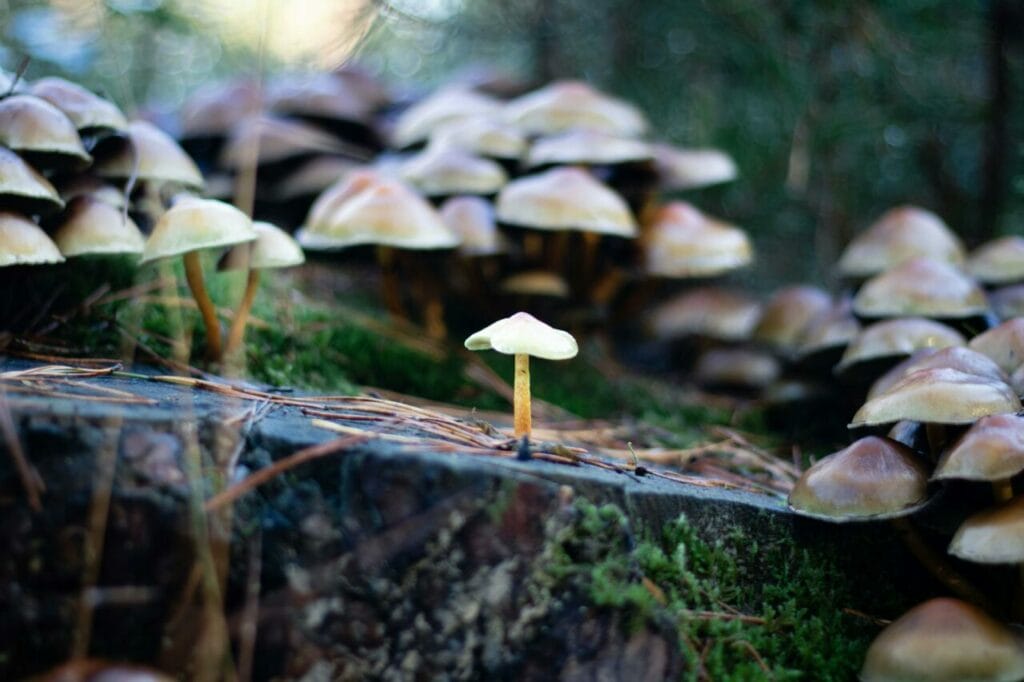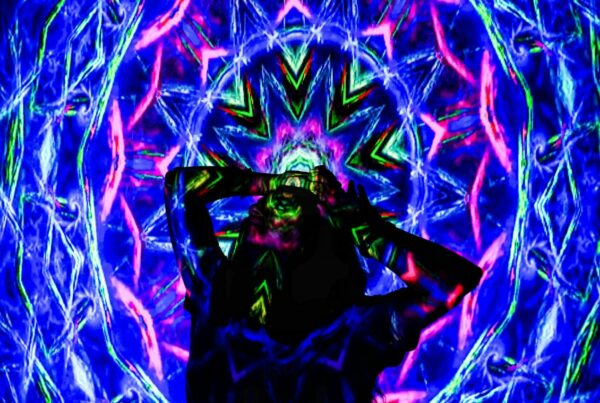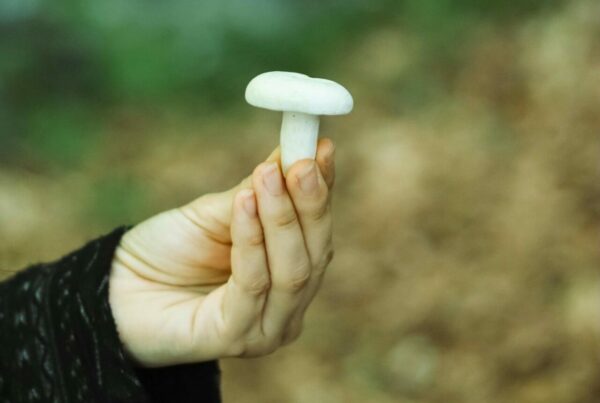Alzheimer’s Disease (AD), a severe neurodegenerative disorder, currently has no known cure. Given its increasing prevalence, it presents a considerable challenge. Scientists are thus exploring more effective treatment methods, incorporating both natural and synthetic options.
Clinical trials have highlighted the promising potential of serotonergic psychedelics like LSD, DMT, and psilocybin in Alzheimer’s disease treatment. For more captivating information, feel free to explore online resources or contemplate “purchasing psychedelics online in Canada.”
[toc]
The Function of Psychedelics in Alzheimer’s Treatment
Conventional psychedelics may be effective in the treatment of Alzheimer’s Disease (AD) in its early stages or mild cognitive impairment (MCI) by fostering brain cell growth.
Psychedelics have the potential to induce neural plasticity beneficial for learning and memory by targeting specific brain receptors, possibly slowing or even reversing the neurodegenerative effects of AD. Additionally, psychedelics may alleviate depression and anxiety, commonly observed in AD patients, by inducing positive psychological changes.
There are ongoing debates about how psychedelic treatments work. Some suggest that profound experiences, such as mystical sensations or a sense of self-dissolution, resulting from high-dose psychedelics are essential for psychological benefits. Others argue that the biological changes these substances trigger are the key. Both perspectives may have merit.
Conventional psychedelics seem to aid the brain in adapting and reducing inflammation, even at lower doses. Therefore, low-dose treatments might benefit conditions like brain degeneration or migraines without significant mind-altering effects. However, for depression, anxiety, or addiction, the mind-altering effects seem critical, leading to introspection and behavioural changes. Thus, both low and high doses deserve investigation for personalized therapy.
The Impact of Serotonergic Psychedelics
Interest is growing in serotonergic psychedelics, including LSD (lysergic acid diethylamide), DMT (dimethyltryptamine), and psilocybin (found in magic mushrooms), due to their potential therapeutic benefits.
Psychedelics are garnering increased attention due to their potential therapeutic effects on a variety of mental health conditions.
Experts point to serotonin receptors, renowned for their cognition-enhancing and neuroplasticity-modulating abilities, as an exciting area of focus in Alzheimer’s Disease (AD) research.
The primary pharmacological impacts of these substances are a result of their interaction with the brain’s serotonin system. This interaction leads to alterations in perception, mood, and consciousness. The evidence from numerous studies supports this theory:
- Particularly, the 5-HT2A subtype of the receptors can influence the gene expression of neuroplasticity-promoting neurotrophins in brain areas affected by AD.
- These receptors play a role in regulating cortical signalling, which is vital for cognition, memory, and synaptic plasticity.
- Despite their irregular distribution within neurons, serotonin receptors contribute to neural growth, regeneration, and plasticity.
Significant Research Findings
- Serotonergic psychedelics have shown promise in alleviating aspects of AD pathology by fostering neuroplasticity.
- Classic psychedelics influence neurotransmission, promote synaptic remodelling, and boost factors that aid neuronal survival.
- Specific psychedelics, such as muscimol and Sig-1R agonists, could potentially reduce the neurotoxicity associated with AD progression.
- Classic psychedelics activate pathways in brain regions affected by AD, suggesting potential for slowing down or even reversing brain degeneration.
- Psilocybin mushrooms stimulate neural plasticity to promote neurogenesis and initiate long-lasting changes in brain circuits.
- Psychedelics improve brain connectivity by targeting receptor genes and instigating changes in neurons and networks.
Clinical research suggests that both classic and non-classic psychedelics derived from magic mushrooms influence a range of biological processes in the brain. These include rapid changes in gene expression and substantial alterations in brain structure and function.
These psychedelics interact with various receptors, including serotonin, sigma, NMDA, and GABA, leading to increased synaptic plasticity and brain rejuvenation. Consequently, psychedelics may have beneficial effects on behaviour, memory, and cognition, positioning them as promising treatments for AD and related disorders.
Buying Psychedelics Online in Canada
Welcome to our online dispensary, offering a comprehensive selection of psychedelic products in British Columbia, Canada. If you’re considering microdosing magic mushrooms, we advise starting with a reputable medicinal mushroom provider.
- LSD
LSD is a synthetic drug derived from a fungus called ergot that grows on rye grains. This psychoactive compound can alter perceptions, emotions, and thoughts, even in small doses.
It’s important to be mindful of LSD intake as overconsumption can lead to intense hallucinations and distort your perception of time and space. Be aware that substances marketed as LSD might actually be other drugs such as NBOMe or part of the 2C drug family.
| Product | Kittease – Ketamine Microdose Troche (30x50mg) | Zenly – LSD Gel Tabs – 600ug (100ug Per Tab) | Zenly – LSD Gummies – Sour Zen Berry – 200ug (100ug Per Gummy) |
| Purpose | Stress, depression, pain management, PTSD, OCD, work-related stress, performance anxiety, insomnia, and addiction. | Unique experiences | Unique experiences |
| Dosage | 50mg per troche / 30 per pack – 1.5 grams of ketamine/ per pack | 600ug total/6 Tabs (100ug/Tab) | 200ug total/2 Gummies (100ug/Gummy) |
| Usage Instructions | Consume one full troche | Take one full tab to achieve the full effect. Wait for at least 2 hours before taking another. | Consume one full gummy to get the complete effect. Wait for at least 2 hours before taking another. |
| Benefits | Fast-acting with minimal risk, increased receptivity, ideal for self-reflection and cognitive enhancement. | Perfectly measured dose for the optimal trip, lab-verified | Perfectly measured dose for the optimal trip, lab-verified |
- Magic Mushrooms
Over 180 mushroom species are known to have psilocybin and psilocin, substances identified for their therapeutic benefits and enhancing influence on mental health.
The impact can vary based on factors such as the type of mushroom, the specific cultivation batch, the amount ingested, and individual tolerance levels. While some people prefer microdosing for subtle effects, others consume larger quantities for a deeper experience. The quality can also differ based on the cultivation techniques used.
The Blue Meanies, scientifically referred to as Panaeolus cyanescens, are small dried fungi that flourish in warm tropical climates, typically on cow and water buffalo dung. As they grow, they exhibit blue specks on their surface, leading to their distinct name.
- These fungi are rich in psilocybin and psilocin, which are present in high concentrations.
- They have been traditionally used for recreational purposes, especially among the Balinese people, who consume them during celebrations and for artistic inspiration.
- They are popular among tourists and travelers in Bali and similar regions due to their hallucinogenic effects. These experiences may include sensations of euphoria, hallucinations, joy, and intense laughter.
- DMT
DMT, a potent hallucinogenic compound, is found in certain plants like Psychotria viridis and Chacruna. Often dubbed as the “spirit molecule,” these controlled substances can lead to deep psychedelic experiences. They offer a short, but exceptionally immersive journey characterized by vivid visual and auditory hallucinations.
| Product | Dream Machine – Vape Cartridge – DMT 1ml | Integral Alchemist – ACACIA Changa Pre-Roll | Integral Alchemist – Mimosa- 1ml DMT Vape Cart |
| Description | Explore hyperdimensional realms with DMT. | Experience effects akin to ayahuasca, with a blend of herbs and DMT. | Embark on a journey filled with mystical visions and spiritual insights with DMT. |
| DMT Content | 1g | Approximately 90mg | 1ml |
| Instructions | Preheat the cartridge and inhale | Enjoy the pre-roll at a pace that suits you. | By inhaling the vapor, the effects can be felt immediately. |
| Effects | Intense hallucinations, altered state of consciousness. | A journey of visual psychedelia, lasting for an extended period. | Spiritual awakening, euphoria, significant alterations in perspective. |
| Duration | Varies depending on the individual | Can last up to 1 hour | May last up to 30 minutes |
Understanding the Long-Term Impacts of Psychedelic Use
Current research is focused on understanding the long-term effects of consuming psychoactive substances. “Long-term effects” refer to any lasting changes in cognition, emotion, or memory following prolonged use of psychedelics, even though our understanding in this domain is still developing.
The study of long-term effects of psychedelics is complex. While some studies indicate potential benefits for mental health, others point to potential risks like the triggering of psychosis.
Despite these complexities, scientists persist in their efforts to fully understand the impact of long-term psychedelic use on mental health. They conduct thorough research, tracking individuals over extended periods to gather more accurate data.
Purchasing Cannabis from a Licensed Vendor
Research indicates a significant shift in the treatment of Alzheimer’s disease, suggesting that psychedelics could bring about a revolution in dealing with brain disorders. Experts anticipate that the therapeutic use of these substances could completely alter the approach to Alzheimer’s treatment, bringing renewed hope to many patients and their families.
If you’re looking for high-quality products, opt for a licensed vendor like Shroom Gummies Canada. With a wide range of cannabis products available, including flowers, edibles, concentrates, and more, Shroom Gummies Canada offers authentic, laboratory-tested items that meet strict food and drug standards.
Place your order for shrooms online now.
Frequently Asked Questions
How do psychedelics differ from other substances commonly used in Alzheimer’s treatments?
Psychedelics differentiate themselves from traditional Alzheimer’s medications due to their therapeutic approach and effects. They stimulate new neural connections by targeting the brain’s serotonin system, leading to profound psychological experiences that foster emotional well-being.
Unlike conventional drugs that primarily manage symptoms, psychedelics are being evaluated by Health Canada for their lasting benefits and comprehensive treatment approach, which includes therapy.
Research into the use
The distinction of psilocybin in treating disorders like obsessive-compulsive disorder and its safety record in preventing multi-system organ failure differentiates it from conventional controlled substances.
Can psychedelic-assisted therapy be a viable treatment option for end-of-life distress in Alzheimer’s patients?
Psychedelic-assisted therapy could potentially provide benefits for Alzheimer’s patients who are critically ill and dealing with their approaching mortality.
- It offers emotional respite. This therapy has shown to ease feelings of anxiety and sadness in certain individuals, especially those who are severely ill. It might similarly benefit Alzheimer’s patients.
- Generally safe when monitored. Psychedelics, when used in a controlled setting and under professional supervision, typically pose no harm and are well accepted by most people.
- Possible enhancement of life quality. For Alzheimer’s patients, an emotional boost can be significantly beneficial, even if there is no improvement in memory problems.
- Further research is required. While the therapy seems promising, more studies are needed to verify its safety and effectiveness for Alzheimer’s patients, especially those in the final stages of their lives.
How long does a psychedelic therapy session for Alzheimer’s patients last?
- Preparation Phase. This phase involves one or two sessions, each lasting 1 to 2 hours. These sessions aim to prepare the patient for the forthcoming experience, manage expectations, and build trust with the therapist.
- Main Psychedelic Session. The key session, during which the patient consumes the psychedelic substance, typically lasts between 4 to 6 hours. The patient spends this time in a controlled setting, mostly lying down with eye shades on and listening to music, under the therapists’ vigilant supervision.
- Integration Phase. Follow-up meetings are held after the session to help the patient understand and integrate their experience. These sessions usually last 1 to 2 hours each, with the number of sessions differing.
You might also be interested in:





